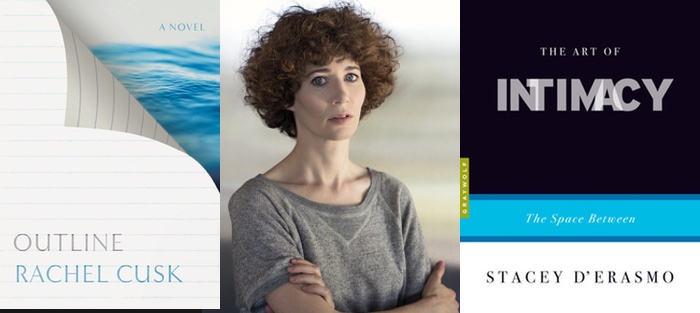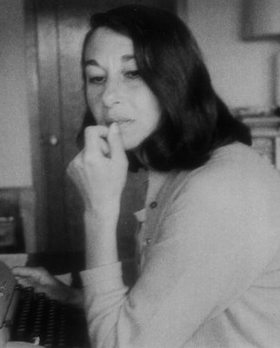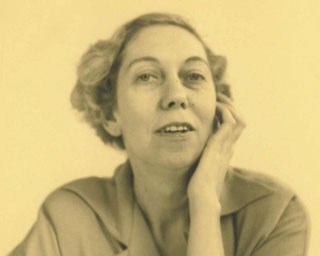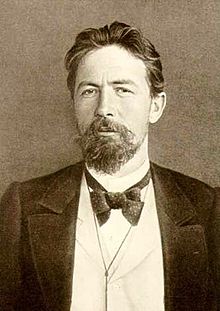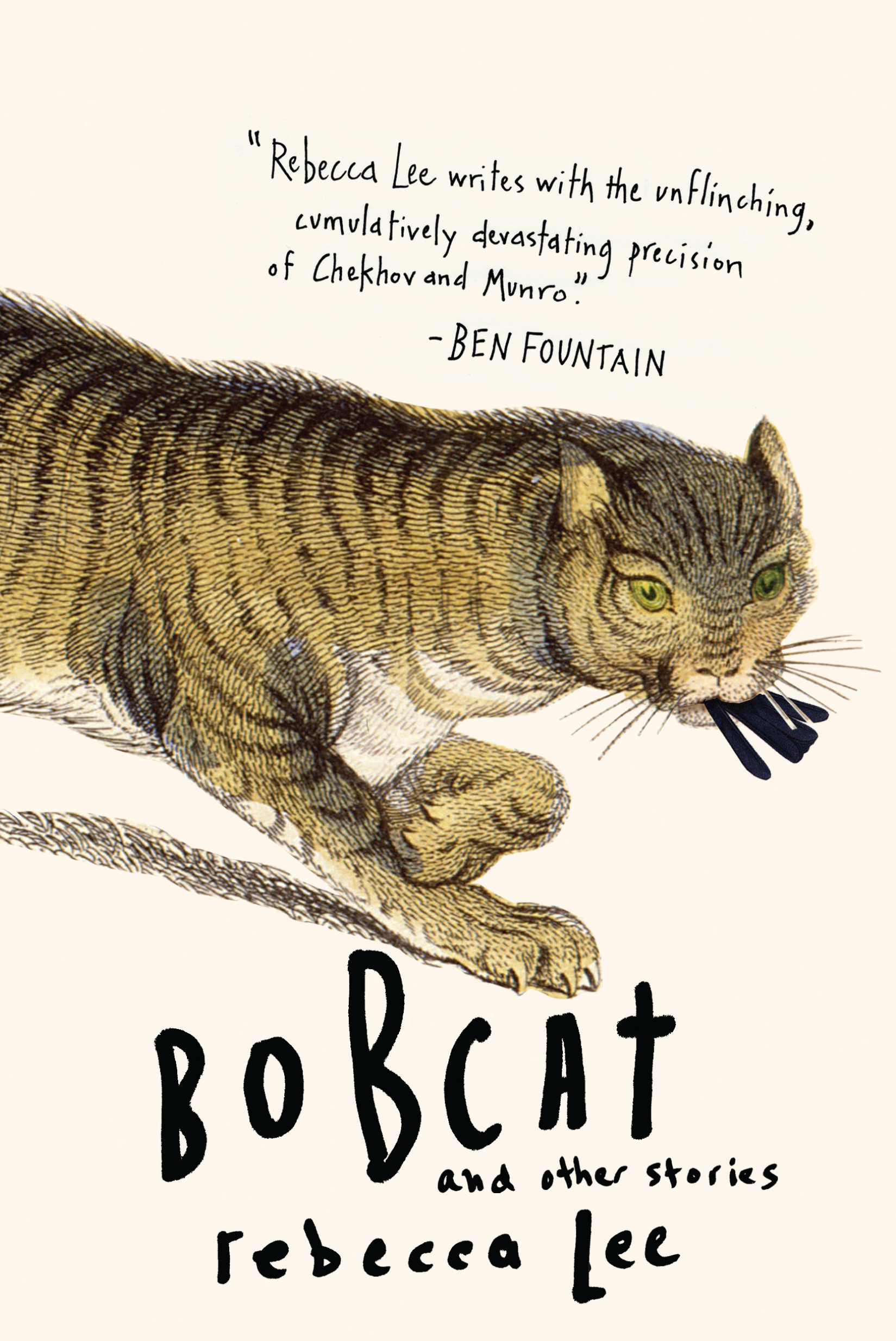Editor’s Note: This is Part II of Christina Ward-Niven’s essay on narrative intimacy. Read Part I first for an introduction to the topic and an in-depth reading of Alice Munro’s “Axis.”
“Roy Spivey,” by Miranda July is the story of an intense connection between strangers that not only handles stereotypes in an original way—it also serves as a worthy example of how to handle intimacy without sentimentality. The first-person narrator, who remains unnamed, is a young, very tall woman who is unexpectedly seated next to a celebrity on a plane. In telling the story, she refers to the famous person by a pseudonym.
On the first page, the story establishes a connection between a character and reader—in this case, the first-person narrator and the reader—in the form of confession. The narrator is sharing a secret, and she addresses us, the reader, using the second person:
I can’t say the name of the [celebrity], but I will tell you that he is a Hollywood heartthrob who is married to a starlet. Also, he has the letter ‘V’ in his first name. That’s all—I can’t say anything more than that. Think espionage. O.K., the end—that really is all. I’ll call him Roy Spivey, which is almost an anagram of his name.
The author here is establishing a tone for the story: this narrator will be confiding in us, and she has a sense of humor.
Thinking back to D’Erasmo’s “clichéd assumptions,” there is a stereotype in the subtext of this passage—the idea of a young woman automatically star-struck in the presence of a Hollywood heartthrob. But it works, culturally received assumption or not, because it’s handled with self-deprecation and unusual language—such as the witty clue “almost an anagram”—and it maintains a calm, wry tone. There’s no predictable breathlessness, no excited texting of friends, no immediate desire to take a photo of the celebrity. Making a character seem aware of the cliché of her intimate situation, and perhaps even resist it, can mitigate the problems of clichéd situations in our stories.
As the story goes on, we encounter intimacy between the two central characters, through gesture. Initially Roy Spivey is sleeping, his famous face “vulnerable and empty,” and the narrator watches him until he wakes. There is no actual physical contact here, but given how near to each other we know they must be on the plane, it is clearly an intimate situation:
Roy Spivey shifted in his seat, waking. I quickly shut my own eyes, and then slowly opened them, as if I, too, had been sleeping. Oh, but he hadn’t quite opened his yet. I shut mine again and right away opened them, slowly, and he opened his, slowly, and our eyes met, and it seemed as if we had woken from a single sleep, from the dream of our entire lives. Me, a tall but otherwise undistinguished woman; he a distinguished spy, but not really, just an actor, but not really, just a man, maybe even just a boy. … We talked ceaselessly for the next two hours, having the conversation that is specifically about everything. He told me intimate details about his wife, the beautiful Ms. M. Who would have guessed that she was so troubled?
If we hadn’t established the earlier wry, self-deprecating tone, this passage could have been embarrassingly sentimental. “Our eyes met, and it seemed as if we had woken from . . . the dream of our entire lives.” But it’s not—why? Because this narrative voice has been established as unsentimental. She’s a bit manipulative, in fact, timing her fake wakeup to match Roy’s, and we learn in a previous paragraph that she has in the past tried to lure men into developing “a thing for tall women” by making sure they see her asleep, early into the relationship, so she appears to be fragile. We have a sense she is not the dreamy, romantic type. But we aren’t sure, so we’re on uncertain ground here, which is often a good thing early in a story. Is she really connecting with him, is he really connecting with her, are either of them pretending, is this genuine? These questions add interest and suspense.
The next scene of the story returns us to narrator-reader intimacy, as the woman describes to us her trip to the airplane restroom, where she clumsily tries to wash her sweaty armpits and ends up soaking her entire outfit. When she returns to her seat, Roy asks why she is drenched, and she explains, honestly. The characters connect through this confession—and the well-rendered anti-cliché here is that this young woman would admit to a Hollywood star that she was trying to clean and de-smell her armpits in the airplane bathroom. Roy Spivey sniffs her shirt and then reaches into his bag and pulls out a bottle of Febreeze, which he sprays under each of her sleeves. Intimacy through gesture, made fresh through comic absurdity. When we witness characters acting on impulse, blurting things out, or doing something totally strange, we come to see them as capable of anything. The unexpected seems possible, and they become more interesting to “watch.” It’s also key to note the role of wit here—a sense of humor, whether the characters’ or the author’s, can go a long way in fending off sentimentality or cheesiness in romantic scenes.
We reach the story’s central moment of physical intimacy between these two characters, as the narrator stretches her arms to air-dry the Febreeze:
One arm extended into the aisle and the other arm crossed his chest, my hand pressing against the window. It was suddenly obvious how tall I was. Only a very tall woman could shoulder such a wingspan. He stared at my arm in front of his chest for a moment, then he growled and bit it. Then he laughed. I laughed, too, but I did not know what this was, this biting of my arm.
“What was that?”
“That means I like you!”
“O.K.”
“Do you want to bite me?”
“No.”
“You don’t like me?”
“No, I do.”
“Is it because I’m famous?”
“No.”
“Just because I’m famous doesn’t mean I don’t need what everyone else needs. Here, bite me anywhere. Bite my shoulder.”
He slid back his jacket, unbuttoned the first four buttons on his shirt, and pulled it back, exposing a large, tanned shoulder. I leaned over and very quickly bit it lightly, and then picked up my SkyMall catalogue and began reading. After a minute, he rebuttoned himself and slowly picked up his copy of SkyMall. We read like this for a good half hour.
So this scene is flat-out weird—though not too weird to be wholly implausible. We can picture this happening, even if we didn’t predict it. Unexpected intimate scenes are made more credible with hyper specificity—the washing of the underarms, the Febreeze, the biting of the shoulder, the four buttons of the shirt, the SkyMall catalogue. Consider what gestures we might have predicted for this scene: a touch on the leg, a head leaning on a seatmate’s shoulder to sleep, a kiss. As written, this scene serves as an excellent lesson in sentimentality avoidance. In addition to employing humor and surprise and avoiding cliché, the author manages to convey the narrator’s mixed emotions through dialogue and action. Her awkward responses during their exchange after the arm-bite tell us much about her state of mind. She is confused, a bit flustered, and somewhat excited. None of this is spelled out, yet her short answers give us that impression: I do like you, she tells Roy. But we detect that the idea of biting a celebrity is bizarre and stress-inducing. Her gestures go on to emphasize this: She bites him “quickly” and “lightly” and then immediately grabs SkyMall to avoid further contact. This moment of connection is both funny and moving—we detect from their nervous, silent SkyMall reading that the relationship between these two strangers has perhaps shifted to a new level.
In the wake of this intense moment, through reflection, as the “salt of his shoulder buzzed on the tip of [her] tongue,” we learn of the narrator’s history of loneliness. She doesn’t state this directly—she never uses the word “lonely.” Instead, she simply reveals to the reader that she lives alone and has a tendency to stand in her living room for hours and “wonder what to do next.” This marks an important shift in tone—another deft use of modulation. There’s a poignant vulnerability in this reflection, a sincere sadness, that differs from the previous wry voice—we empathize with her after this disclosure. Loneliness is tough to convey on the page—it can sometimes come across as self-pitying—but here it is handled subtly and effectively. The narrator’s frozen inability to act, the image of her standing alone in her living room for hours with nothing to do, evokes loneliness far more powerfully than the use of the word itself.
Later on in the flight, the two characters do hold hands, and the moment is surprising and unsentimental thanks to the language used to describe the narrator’s feelings. A moment earlier, Roy Spivey wrote out his phone number for the narrator, or actually his kids’ nanny’s phone number, which is as personal as he apparently can get. There’s one digit missing, and he asks her to memorize it: the number four.
We turned our faces to the front of the plane, and Roy Spivey gently took my hand. I was still holding the paper with the number, so he held it with me. I felt warm and simple. Nothing bad could ever happen to me while I was holding hands with him, and when he let go I would have the number that ended in four. I’d wanted a number like this my whole life. The plane landed gracefully, like an easily drawn line. He helped me pull my carry-on bag down from the bin; it looked obscenely familiar.
A fairly mundane gesture of intimacy—holding hands—is charged by the unusual: the strangeness of that number in her hand with its missing digit. The narrator tells us she’s “wanted a number like this [her] whole life.” We assume she’s really talking about her connection with Roy Spivey and the potential for a relationship with him, not actually the number. The image of the “obscenely familiar” carry-on bag is telling, as well: it’s a harsh reminder of her solitary real life back on the ground.
But on the contrary, rather than Roy Spivey himself, it is the number four that plays a role in the intimacy of the rest of the story. She keeps the origin of her so-called lucky number a secret her entire life—as readers of this story, we are the only ones in on its meaning. (Once again, character-reader intimacy.) A sudden temporal change drives the story into flash-forward, and through confession, the narrator discloses to us all of the very private moments throughout her life in which she whispered the number four, including during painful intercourse with her husband, when her father died of lung cancer, and when she got a phone call that her teen daughter was in trouble in Mexico City.
Secrets and suspense again play a role. When characters have secrets or share secrets, there is the immediate “what if their secret comes out?” question that comes to mind. We turn pages to find out.
In the concluding paragraphs of “Roy Spivey,” it is at least two decades after the plane ride, perhaps more, and the narrator finally dials the phone number for the very first time. Why did she wait so long? This question goes unanswered; we sense that the narrator herself would not be able to answer it. It’s one of those life questions that fiction is here to ask but not always answer. The final scene artfully evokes her now middle-aged, empty-nest melancholy, again without using the potentially problematic word “lonely”:
I dialed all the digits, including the invisible one that had shepherded me through my adult life. It was no longer in service. Of course it wasn’t. It was preposterous for me to have thought that it would still be his nanny’s private line. Roy Spivey’s children had long since grown up. The nanny was probably working for someone else, or maybe she’d done well for herself—put herself through nursing school or business school. Good for her. I looked down at the number and felt a tidal swell of loss. It was too late. I had waited too long.
I listened to the sound of my husband beating the car mats on the sidewalk. Our ancient cat pressed against my legs, wanting food. But I couldn’t seem to stand up. Minutes passed, almost an hour. Now it was starting to get dark. My husband was downstairs making a drink and I was about to stand up. Crickets were chirping in the yard and I was about to stand up.
Throughout “Roy Spivey,” Miranda July successfully avoids sentimentality in intimate scenes through her deft use of surprise, suspense, and modulation, her original handling of potential clichés, and her complex portrayal of emotion. In doing so she turns a simple narrative about strangers meeting on a plane into something beautiful: a story that is strange, funny, and unexpectedly moving.
Rachel Cusk’s novel Outline is, in a sense, a counterexample to the previous two stories. In fact, it’s unlike any book I’ve read. The jacket copy calls it “a novel in ten conversations,” and that might be the best way to begin to describe it. The narrative follows an English woman, unnamed for most of the novel, who is teaching a writing class in Athens, Greece. The story starts on the day of her flight from London to Athens, and it ends a few days later, the day of her return home. Each of the ten chapters is made up of conversations she has with various people during her trip—such as her seatmate on the airplane, her fellow writing instructors, and various friends she meets up with in Athens. What’s unusual about the novel is how little we learn about the first-person protagonist, and how much we learn about the people with whom she converses. She is essentially providing a report of her interactions with others over the course of several days, while offering only the barest details of her personal story or background. Hence the title—we are ultimately able to see only an “outline” of this woman. It would seem that such a novel would be devoid of intimacy, that it would read more like a transcript. But on the contrary, it is full of affecting moments in which we feel extremely close-in to either the narrator or to secondary characters. How does the author achieve this?
 From the start, the narrator establishes a distinctly detached, cool voice. We learn quickly that she is sharply observant, occasionally demonstrating a subtle sense of humor, but at the same time the narrative voice is almost entirely unemotional and non-participatory in conversations. In the book’s introductory scene, the narrator meets with a wealthy man who asked her to lunch the day of her trip, and we’re given a summary of his side of the discussion but no report of her responses. After the novel’s straightforward, in medias res opening line—“Before the flight I was invited for lunch at a London club with a billionaire”—a recounting of the conversation ensues:
From the start, the narrator establishes a distinctly detached, cool voice. We learn quickly that she is sharply observant, occasionally demonstrating a subtle sense of humor, but at the same time the narrative voice is almost entirely unemotional and non-participatory in conversations. In the book’s introductory scene, the narrator meets with a wealthy man who asked her to lunch the day of her trip, and we’re given a summary of his side of the discussion but no report of her responses. After the novel’s straightforward, in medias res opening line—“Before the flight I was invited for lunch at a London club with a billionaire”—a recounting of the conversation ensues:
He talked in his open-necked shirt about the new software he was developing. . . . He mentioned a scheme he was working on, to eradicate lawyers from people’s personal lives. He was also developing a blueprint for a floating wind farm big enough to accommodate the entire community of people needed to service and run it. . . . On Sundays he played drums in a rock band, just for fun. He was expecting his eleventh child, which wasn’t as bad as it sounded when you considered that he and his wife had once adopted quadruplets from Guatemala. I was finding it difficult to assimilate everything I was being told. The waitresses kept bringing more things, oysters, relishes, special wines. He was easily distracted, like a child with too many Christmas presents. But when he put me in the taxi he said, enjoy yourself in Athens, though I didn’t remember telling him that was where I was going.
So—not particularly intimate, and not intended to be. That is the last we hear about the billionaire; the narrator doesn’t reflect further on the conversation. There’s no mention of her feelings about him or the meeting, except that it was “difficult to assimilate” all that he said. This is simply a reported incident, and next the narrator moves on to report in a similarly detached way the experience of being on the plane. The opening scene’s role seems in part to establish a pattern; we are being taught, as readers, how to experience this novel. By setting up a tone of cool objectivity, the author gives herself room to surprise the reader later on by breaking the pattern—with moments of honest, self-inquiring emotion—however brief those moments may be.
Because we don’t expect intimacy from this narrator, when she does offer glimpses of herself they are all the more striking—as though she is finally letting us in on a secret. On the plane, the narrator’s seatmate—a short, much-older man in a linen suit—strikes up a conversation, and for the next twenty-five pages, we get straight reportage of his story: his background, his family, his marriages and divorces. For a good bit of this section we still know nothing about our narrator: not her name, her age, her job, her family or relationship situation. Finally, eleven pages in, there’s a brief break in the seatmate’s story, and we receive our first bit of information about the narrator. It’s just a few lines, and it’s offered in the same crisp tone of reportage that has marked the narrative so far, but one word in the paragraph stands out as an indication of vulnerability—or at least, the most vulnerable this narrator has been so far:
He began to ask me questions, as though he had learned to remind himself to do so, and I wondered what or who had taught him that lesson, which many people never learn. I said that I lived in London, having very recently moved from the house in the countryside where I had lived alone with my children for the past three years, and where for the seven years before that we had lived together with their father. It had been, in other words, our family home, and I had stayed to watch it become the grave of something I could no longer definitively call either a reality or an illusion.
It’s the word “grave” that jumps out, here. The narrator abandons her detachment in that single word—within a single sentence of self-reflection—and it’s such a change in tone that it strikes us, and we realize for the first time: this woman is grieving. She is mourning a failed marriage. Also note in this section the narrator’s effort to put words to intimate feelings that are nearly inexplicable to her; this is an example of an another important aspect of writing intimacy: the value of—despite the challenge—attempting to directly address the parts of intimacy that are hard to understand, hard to put into words. This entire novel, we will come to find, is a product of this narrator’s grieving, and is an effort to understand her own grief, although the number of words in the novel expended directly on her marriage and divorce are very few, compared to the words given over in service of other characters’ stories. Yet it is this minimalism in her self-focus that gives her rare moments of exposure a resonant power.
For example, later in the novel, in chapter four—after chapters focusing on the narrator’s conversation with a fellow writing teacher, and a chapter describing the apartment the narrator is staying in, all containing only bits and pieces of the protagonist’s story—we come to an extended intimate moment. Her airplane seatmate has stayed in touch with her in Athens, and he has invited her out on his boat. Now they are both sitting on the deck of the anchored boat, watching a family on another anchored vessel, nearby: a man, a woman, three playing children, and a baby. The language takes a turn toward the emotionally raw:
I said that I found appearances more bewildering and tormenting now than at any previous point in my life. It was as if I had lost some special capacity to filter my own perceptions, one that I had only become aware of once it was no longer there, like a missing pane of glass in a window that allows the wind and rain to come rushing through unchecked. In much the same way I felt exposed to what I saw, discomfited by it. I thought often of the chapter in Wuthering Heights where Heathcliff and Cathy stare from the dark garden through the windows of the Lintons’ drawing room and watch the brightly lit family scene inside. What is fatal in that vision is its subjectivity: looking through the window the two of them see different things, Heathcliff what he fears and hates and Cathy what she desires and feels deprived of. But neither of them can see things as they really are. And likewise I was beginning to see my own fears and desires manifested outside myself, was beginning to see in other people’s lives a commentary on my own. When I looked at the family on the boat, I saw a vision of what I no longer had: I saw something, in other words, that wasn’t there.
Although the tone here still leans toward the abstract and cerebral, the direct focus on the self comes as such a contrast to previous paragraphs that it’s surprising and feels painfully intimate. The narrator experiences an overwhelming sense of loss when looking at a family simply hanging out together on a nice day, and the feeling is so strong that she is moved to admit for the first time to her acquaintance—still nearly a stranger—the “bewildering and tormenting” period she is going through.
Outline also offers moments of narrative intimacy within the stories of secondary characters—the various other people the narrator talks to during her short time in Athens. She reports their stories, as they’ve been told to her, and this at first seems like a random mish-mash of conversations, but we come to sense that she is reporting these particular conversations to us because their tales of heartbreak and pain resonate with her current emotional state. Her first-person recounting of others’ words works on us in a mysterious way, because she makes herself so absent; we find ourselves almost forgetting about her presence, feeling as though we ourselves are sitting across from each speaker, listening to their stories.
Chapter Six details the first day of the writing class, and we are introduced to all of the students, including a young man named Christos. Christos shares a personal story with his classmates that is surprisingly, oddly moving because it is so personal and honest. This is again intimacy through confession:
As a child . . . [Christos] had been extremely shy and awkward, to the point where his mother had decided to enroll him in dancing classes as a way of building his confidence. These classes, which took place in a nearby hall and were attended by local girls and a smaller number of local boys—barbarians all—were a torment to him on a scale that even now is difficult for him to convey. It was not only that he was overweight and physically unconfident: it was that he had a fear of exposure that drove him inexplicably, in such situations, to make himself fall over. It was a kind of vertigo, he said, such as drives people who are frightened of heights to want to jump; he simply couldn’t bear being looked at, and to ask him to dance was like asking him to walk a high wire, where the thought of falling must be so ever-present that it would eventually bring itself about. And fall he did, repeatedly and with anguish, flailing humiliated among the twirling feet of the other children like a beached whale, and consequently subject to much mockery, until the dancing teacher was forced to suggest that he stop attending classes and he was allowed to stay home.
Christos goes on describe how this experience with the dance class affected him later in life, when he became close friends in college with a girl who loved to dance. Reading this chapter, I found myself as engaged in his story as I would the story of a central character. But his role is no bigger than most of the other minor characters in Outline. I was equally invested in their stories. How does Cusk successfully convey intimacy through these secondary characters’ stories, which are often given to us secondhand by the narrator? In part, it is the way she gives the stage over fully to the characters. She rarely tries, particularly, to paint a scene—we don’t have glimpses of the classroom interspersed between lines of dialogue, for example, or the other students’ reactions while one person is speaking. Instead she simply shines a direct spotlight on a character and allows them to share, uninterrupted. This has the effect of someone speaking at a therapy group session, offering confidential personal revelations. The whole book is full of such therapy-esque confessions.
Cusk also allows her characters to delve deeply into their experiences—to self-analyze, rather than merely report. Christos does not simply say, “My mother forced me to take dance classes and it was totally traumatizing.” Instead we get his insightful comparisons between his dance fears and high-wire walking, and his feeling like a “beached whale” among the other dancing children.
In addition to such confession and reflection, Outline does include intimacy through gesture, but given the unemotional, detached tone of the narrator, it comes as no surprise that there is only one physically intimate scene involving the protagonist. The physical contact is between the narrator and her new friend, the older man who sat next to her on the plane. It is not a sex scene, but it is so awkward and uncomfortable that we feel as though we are watching something painfully intimate. The seatmate takes the narrator out on his boat for the second time, and he finally does what we’ve been expecting (but apparently the narrator does not expect): he announces that he has feelings for her.
There was a certain stiffness in his manner, a self-consciousness, like that of an actor about to deliver a too-famous line.
“I have been asking myself,” he said, “why it is that I find myself so attracted to you.”
He spoke so momentously that I couldn’t help laughing out loud. He looked surprised and somewhat confused by this, but all the same he came towards me, out of the shade and into the sun, heavily yet inexorably, like a prehistoric creature issuing from its cave. He bent down, moving awkwardly around the coldbox at my feet, and tried to embrace me from the side, putting one arm around my shoulders while attempting to bring his face into contact with mine. I could smell his breath, and feel his bushy grey eyebrows grazing my skin. The great beak of his nose loomed at the edge of my field of vision, his claw-like hands with their white fur fumbled at my shoulders; I felt myself, momentarily, being wrapped around in his greyness and dryness, as though the prehistoric creature were wrapping me in its dry bat-like wings, felt his scaly mouth miss its mark and move blindly at my cheek. Through the whole thing I stayed rigidly still, staring straight ahead of me at the steering wheel, until at last he withdrew, back into the shade.
Here the author extends an event that would surely have happened in a few seconds into a full paragraph through details and specificity. We distinctly feel the bumbling vulnerability of an old man bravely trying to plant a romantic kiss on a younger woman, the awkwardness of that overture being totally unreciprocated, and the frozen mortification of the narrator as she sits in silence. Sensory detail is key to this scene, as is a touch of wry, slightly mean-spirited humor: the elderly man is a “prehistoric creature issuing from his cave” with “claw-like hands” and “dry bat-like wings.” Slowing down an intimate scene such as this one serves to make the awkwardness palpable; as we all know, awkwardness is a real aspect of human physical intimacy, so successfully conveying it on the page gets you that much closer to painting a picture of what it’s like to be human in this world, trying the best we can to connect with others. The use of unusual metaphor adds a layer of interest that keeps the moment from verging toward predictability (we predicted something like this would happen between these two characters, so it was important for the author to handle it with originality). The author subverts expectations with the woman’s reaction to this attempted kiss: she doesn’t say no and turn away, she doesn’t demure apologetically—the reactions we might expect from a grown woman being kissed by a much older man she is not attracted to, but feels kindly toward. Instead, interestingly, she sits completely still and does absolutely nothing. When he withdraws, she simply gets in the water and swims. It is not until she returns to the boat that she addresses his attempted kiss, telling him, while the sun “beats uncomfortably on her face” that she “is not interested in a relationship with any man, not now and probably not ever again. What she values most of all is friendship.” Because of the established voice of this narrator—straightforward, grieving her broken family—this comes across not as an insincere attempt to merely make him feel better, but a completely truthful—and sad—confession. It’s an intimate revelation. The value of using dialogue for such moments is that it raises the level of tension between the characters. Again, it’s awkward for both of them, and it feels real.
Ultimately, Outline demonstrates the importance of digging deep into intimate moments, looking at them from all angles in an attempt to understand the inexplicable. It also teaches us the value of contrast—the decidedly non-intimate voice of this novel results in highly effective intimate moments, when they arrive.
My hope is that this essay leaves you with some practical craft tools, as well as food for thought, as you work to bravely and honestly display on the page close connections and vulnerable moments experienced by your characters, your narrators, and—through them—yourself. I’ll conclude with one more suggestion: Forget everything you just read.
More specifically, forget it while you are generating first drafts. In the interest of being as creatively unsafe and risky as possible, let these ideas about narrative intimacy simply float in the far reaches of your subconscious, or set them aside completely, and bring them out during revision. Everyone’s process is different, but I’m not sure it’s beneficial to consciously think about strategies and tools when creating something brand new.
In your real life, fasten your seatbelt, wear your helmet when you ride your bike. But let your characters ride untethered. Let them bare their skulls.

